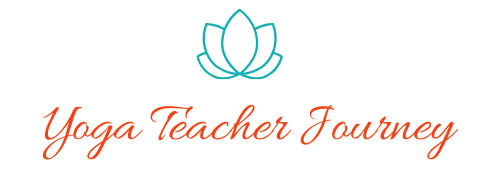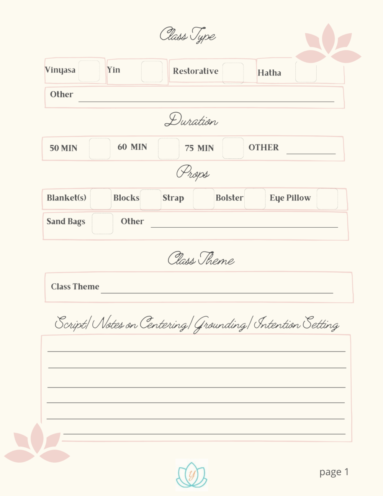For new yoga teachers, having the confidence to properly cue students into postures is one of the most challenging obstacles in their new career. If you are reading this post, it is probably because you too are a little uneasy in this area. There is no doubt that all teachers started right where you are now and may have required a little extra boost in this department. If you haven’t already, be sure to read Six Secrets of Effective Cueing – it’s a great place to start and offers many foundational cueing principles. Then, read on for even more insider secrets.
Cueing While Teaching Online
You might wonder if cueing students while teaching online (a fairly new development in the past year) is different from cueing in a studio and teaching face-to-face. I would have to say yes, it is very different. When in a studio, YOU receive many cues from students. There are ways to read your students that may determine the way you teach. If you’ve not yet had the opportunity to teach in a studio, let me explain.
When teaching yoga, you should always teach (and therefore cue) keeping the least experienced student in mind. If you have a room full of experienced yogis – maybe regulars you know – and a beginner student attends, you need to cue so that the beginner student can follow. Maybe this requires adding in more verbal cues to modify poses if needed. It may require adjusting the speed of your flow for the student to keep up. It may require more explanation, such as saying both the Sanskrit name and English name of the pose, or the definition of what it means when you use terms like “drishti” (gaze), “asana” (posture), or “mudra” (hand gesture), for example. Maybe you teach more physical benefits so they know how their body is benefitting from the pose. Including all of this won’t affect your more experienced students’ practice. They will do what they know to do and either hold longer working on perfecting alignment, engaging key muscles, or maybe they’ll enjoy the refresher. Reminding students of foundational principles is not a bad thing.
It is not only beginners you need to read. Although we all have similar structures, our bodies are all different. There is no “one size fits all” in yoga or cueing. Also, as teachers we can’t assume everyone is feeling in tip-top shape each and every day. If we can’t SEE students as well – or at all in some cases – it’s important to remind students to honor what they feel in their body. Fitness Instructor, Lisa Thomas, from Lisa Thomas Fit says the most challenging thing about cueing online is “not being able to see the student, because most people keep their cameras off.” Lisa goes on to say, “I really need to think about how to say the cues precisely, so they understand what I mean – and make sure I’m demoing the posture the way I’m describing it.”
To help students understand and build body and self-awareness, I say the following phrases frequently during practice:
- “honor what you are feeling”
- “you know your body best”
- “my cues are suggestions; if it doesn’t feel right, don’t do it”
- “you should not feel discomfort”
- “you can always skip vinyasas and go straight to down dog”
- “you can always take a break in Balasana (child’s pose)
Assume your students may not see YOU as well either. After all, they are moving about and can’t be and shouldn’t be gazing over at the screen every moment to watch you demo. So, cue often, and give them a heads-up on what’s to come next. Offer cues such as “moving into Virabadrasana II (warrior II) …” for example, so they know what’s coming next and can move their body accordingly.
Make sure students can hear you well too. Be mindful of projecting your voice. If you’re not using a microphone, be sure to speak in the direction of the device you’re using to record or stream your class (phone, computer, ipad). If you’re facing the opposite direction with your back to the device, chances are the device mic is not picking up your voice clearly.
I understand that Apple AirPods work amazingly well (although I have not taught using them myself as of now). They operate with features such as background noise cancellation and provide an exceptionally clear microphone. I have only been on the receiving end of the AirPods, not the sending end, but can vouch for the clarity that I heard. If you’re using a microphone or AirPods, you shouldn’t have the projection issues, but always speak clearly and enunciate mindfully. We don’t want our cues misunderstood! Who knows what disaster that could lead to in a student’s practice!
A final word on teaching online. Always assume you have students who need extra care, reminders, and beginner type cues. Even if no beginners are present, reminders and options are always a good thing.
Cueing Props for Class
Begin the practice by cueing students to have the props they will need for the class and the props that may be optional. If beginners are present, blocks are always a good prop to modify many poses from Uttanasana (forward fold), to Anjanyasana (low lunge), and Eka Pada Rajakapotasana (one-legged pigeon pose) to name just a few. Even if only experienced yogis are attending you may wish to let them know, for example, you are peaking to Ardha Chandrasana (half moon) during the practice and they may wish to place blocks at the top of their mat. If there are students who feel they don’t need it for that pose, they will simply opt not to grab the blocks.
Straps are another prop that you may opt to use and cue during class. If students can’t reach their feet in poses like Natarajasana (dancer), or Dhanurasana (bow pose), for example, straps may be helpful.
I always cue students to have an optional blanket to assist with padding sensitive knees and tell them even if their knees aren’t sensitive, it’s a good idea to use them to protect their knees for the future. Thinking ahead to ensure longevity in our practice is a mindful way to teach. Blankets are also a great prop to cue for seated forward folds, since elevating the hips may allow for more anterior tilt of the pelvis.
Additionally, blankets are wonderful to have for Savasana (corpse pose), to cover up or use as a pillow under the head or roll and place under the knees. If there is something specific you’re teaching that a blanket is required for, be sure to announce that at the beginning of class as well. If I’m teaching a specific themed class on Self-Care of Self-Compassion, I may use more blankets to cue for extra comfort in Savasana or for supported poses like supported Matsyandrasana (fish pose). My motto is “the more blankets the better!”
If you are teaching classes other than Vinyasa, like Restorative, Gentle, or Yin, more props may be required.
Cueing for Self-Assists and Body Awareness
In today’s yoga classes, even during in-person classes, hands-on assists have become a thing of the past. Until things return to “normal” (and no one knows what and when that will be), cueing students to assist themselves in some postures can enhance your class. I wrote about this recently in What Your Students Want you to Teach Them Online, but it certainly bears repeating.
Just to be clear, assists are not adjustments and this can get a bit foggy. On a basic level, assists are provided to allow a student to deepen the posture, to experience it more. Adjustments are provided by instructors to physically align the student in the posture correctly. In the online world, we are mostly using our verbal cues to align the student correctly; although there are ways to verbally cue students for hands-on self-adjustments in some postures as well.
Cueing students for self-assists deepens the students experience in the posture. It allows them to connect to themselves even more, building more body awareness, mindfulness, and may even fill some of the void and the lack of physical connection many students are experiencing these days. So here are a few suggestions to cue your students to self-assist.
Teach them to use their hands to experience their movement. To place their hands on their heart, feel their heartbeat. Feel the rise and fall of their chest. There are many postures that come to mind to use these cues, for example: Ardha and Supta Matsyandrasana (seated and reclined spinal twists), Tadasana (Mountain pose), Savasana (corpse pose).
Likewise, students can place one hand on their low back in seated postures and feel their low back expand and contract with each breath they take. You can cue them to “notice the expansion and contraction of their back ribs” with each breath they take in Balasana (child’s pose). Cueing the hand to low back in Utthita Trikonasana (extended triangle pose), can also allow students to deepen the twist in the posture.
Cue students to use their hands to massage their feet in postures like Baddha Konasana (bound angle pose) when we are slowing down the breath and where feet can be within easy reach. Cue to use one hand in a reclined twist to gently press down on the thigh and deepen the twist.
Savasana is a posture in which students can assist themselves into deep relaxation. Cue them to gently massage their own shoulders, neck and head. Cue to massage their forehead and temples. Then use one hand to massage the other hand and fingers, before cueing to “relax their arms by their sides and release all tension in their elbows, wrists, and fingers.”
Let your creativity flow with self-assists. During your own practice, what can you do to deepen your experience in each posture?
That’s a wrap!
I hope you enjoyed these additional insider secrets to successful cueing! To reiterate, if you haven’t already, be sure to read Six Secrets of Effective Cueing – it’s a great place to start and offers many foundational cueing principles to build your cueing confidence. It also lists some great additional resources to learn more about effective cueing.





